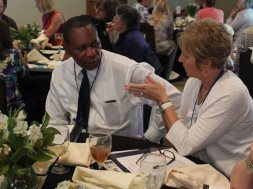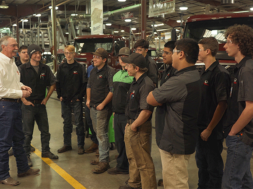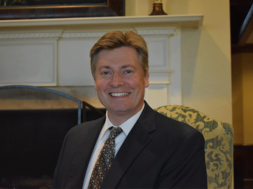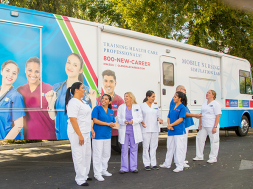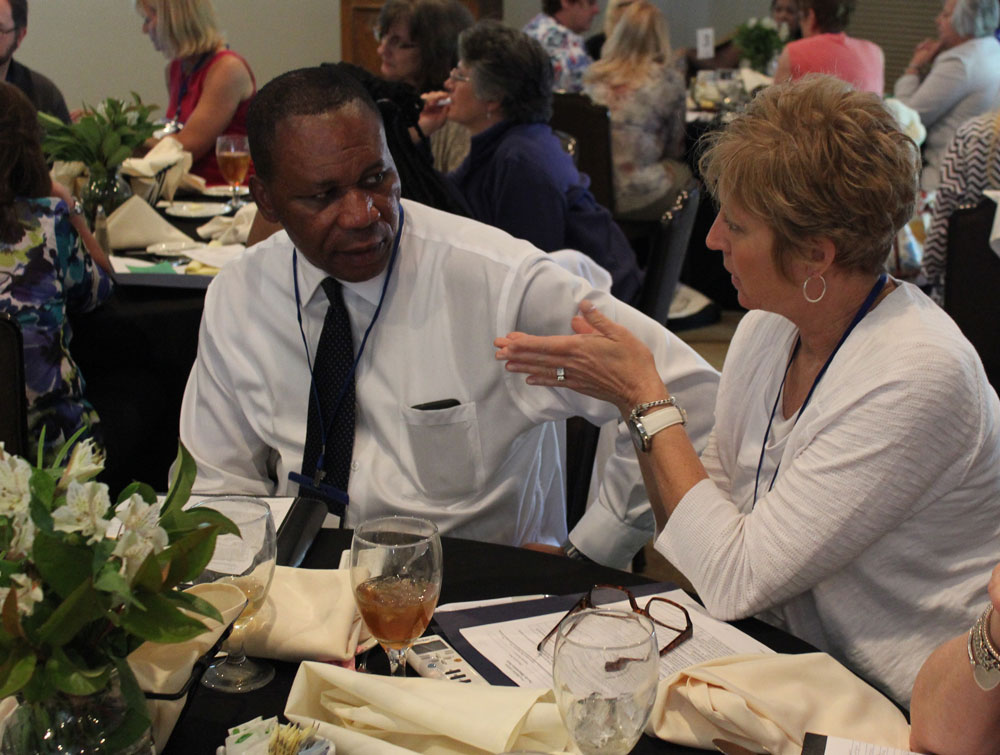
Pima Medical Institute Hosts its First Academic Summit
By Dionne Billick, Director of Education, Pima Medical Institute
Pima Medical Institute, a leading private medical college with 16 campuses across the western United States, held its first Academic Summit in Tucson, Arizona, April 21-13, 2015.
The summit aimed to increase communication between program directors, inspire and encourage classroom innovation, share best practices and acknowledge achievements with an awards celebration.
The inspiration for the summit originated with Pima Medical Education Director Dionne Billick, who was assisted by Education Department team members in bringing the vision to fruition.
“Pima Medical has continued to expand its educational offerings by developing programs that meet the evolving needs of our communities. We have gathered a group of talented leaders as our program directors who ensure that high-quality education takes place in our classrooms,” Billick said. “I wanted to give them an opportunity to meet each other, work together and foster an environment that will continue to further enhance education at our schools.”
Pima Medical has expanded to 16 campuses across the West, it’s critical that increased communication between program directors be fostered, that ideas and innovations be shared and that across-the-board compliance be maintained.
In total, 52 program directors attended the summit. The directors oversee Pima Medical’s paramedic, diagnostic medical sonography, health care administration, ophthalmic medical technician, radiography, physical therapist assistant, occupational therapy assistant, dental hygiene, respiratory therapy, nursing, veterinary technician and online bachelor degree programs.
“By bringing all the program directors together, we were able to create an atmosphere of collaboration that is invaluable to a school like ours, which is spread out across seven states,” said CEO and President Fred Freedman. “We want our students to have the best experience possible at Pima Medical Institute.
When program directors get together to share their ideas and best practices, it serves to even further improve the student experience.”
Billick opened the summit by providing a historical overview of Pima Medical’s program development, noting that from 2000 to 2015, the number of program directors increased dramatically, from 12 to 56 – more than a 400 percent increase. The quality of the programs and Pima Medical graduates is largely due to the leadership of the program directors and the school’s strong community partnerships, she said.
“Just like you have goals and visions for your programs, one of my goals for the Education Department was to provide an opportunity for all the program directors from Pima Medical to gather in one place at the same time,” Billick said. “Standing in front of this room, I am awed by the talent and expertise represented. Collectively, this is an impressive group of people.”
The summit spanned three days, with the first day focusing on talks given by Pima Medical directors and educators.
The first talk was given by Education Assistant Director Jean Vanderzee, who spoke on best practices in observing and reviewing instructor performance.
Pima Medical’s Mesa, Arizona campus Radiography Program Director, Mike Hawkes, spoke on innovation in the classroom, including integrating new technology. Regulatory Affairs Coordinator Jen Spurlin spoke on Accrediting Bureau of Health Education Schools (ABHES) record keeping, and Dental Hygiene Program Director Melisa Plese from Pima Medical’s Albuquerque, New Mexico campus spoke on the importance of interprofessional education.
During Vanderzee’s presentation, program directors discussed best practices in faculty observing and how to give feedback. The directors viewed video clips of Pima Medical instructors as they taught in lecture and lab classes, and then used an observation form to evaluate the instructors and to discuss their observations with their peers.
The program directors shared information and strategies about documenting formal and informal observations and also discussed partnering with faculty coordinators to develop plans to assist faculty.
During Hawkes’ presentation, he showed other directors how he applies technology in the classroom. Hawkes effectively implements a wide range of software and hardware, such as Zentation, a software that he uses to make videos, and Kahoot, a free assessment tool that can be used with student cell phones and tablets.
Hawkes emphasized the need for balance when choosing innovations to try, making certain they will add value to the lesson and that students understand the purpose behind their use. He also spoke of the flipped approach to learning, which can increase student engagement, support collaborative learning and build student self-efficacy.
“It’s metacognition – teaching them to understand how they learn,” he said.
In the third presentation, Spurlin spoke about program management and recordkeeping. She explained what program directors can do to maintain compliance with ABHES, as well as how to simplify programmatic regulatory record keeping. She provided each participant with a binder system for organizing the required records for each year.
In the final presentation, Plese delved into interprofessional education (IPE). Citing the necessity and frequency of interactions between multiple health care providers, Plese emphasized the importance of fostering this communication on our campuses.
She gave an example of a recent project students conducted at the Albuquerque campus where students from several different programs worked together to provide more patient-centric care.
“Through IPE, students are more likely to be collaborative and work in a team,” Plese said. “Silos should be avoided and communication and teamwork should be stressed. Our graduates should feel more confident to call another provider on behalf of a patient and get them the care they need.”
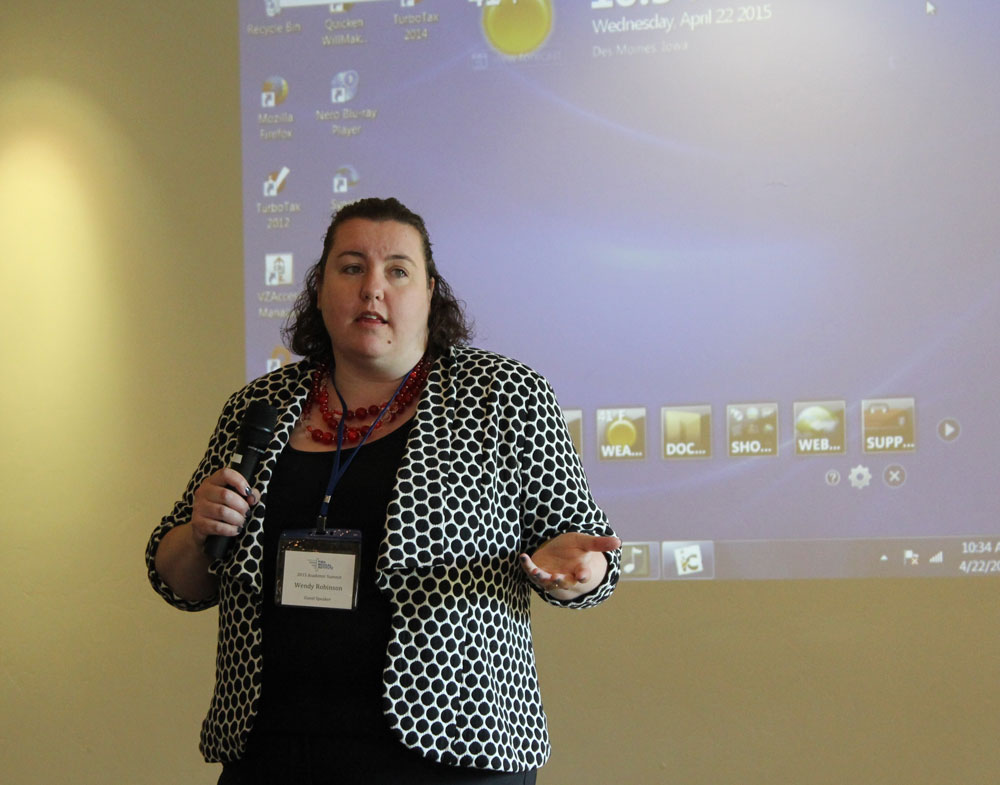
Keynote speaker Wendy Robinson, Minnesota State Colleges and Universities
The second day of the summit featured guest speaker Wendy Robinson of Minnesota State Colleges and Universities. Robinson presented a half-day workshop on leadership styles and effective management. She shared with directors which methods she found most successful and which are detrimental to a staff.
“What is the job of a leader,” Robinson asked the crowd. “Is leadership and management the same thing? No.”
She asked directors to think about what type of leader they may be and to reflect on their styles. She also touched on the task of setting goals as a manager.
“Pace setting poisons the culture,” Robinson explained. “Demanding more and more all the time is discouraging and micromanagement is not effective. In higher education, a transactional leader is not effective,” she added. “Making it all about numbers is not inspiring.”
For a department that needs dusting off, a transformational leader is often a great change agent, she said. “They may have a shorter shelf life, but they can be extremely effective.”
Robinson also stressed leaders and managers who constantly demand consensus from their staff can expect burn-out. It creates divisiveness and dissatisfaction, she explained.

Respiratory Therapist Assistant Program Directors Albert Ohanuka from Pima Medical’s Albuquerque, N.M., campus, and Tammy Redasky from the Tucson, Ariz., campus, collaborate on program directives during the Academic Summit.
“Effective leaders ask questions, are open to suggestions and speak the language of decision makers. They take guidance and own up to mistakes.”
The second day also involved program director breakout session, where they held smaller meetings to discuss program-specific topics and concerns related to curriculum, accreditation, program budgets, student and faculty supervision, policies and procedures and more.
On the evening of the second day, a dinner and awards ceremony brought all the summit’s participants together in celebration. Awards were given to program directors acknowledging both education and regulatory achievements.
“Recognizing our program directors’ outstanding work is not only important, but also inspiring,” Freedman said. “Without them, Pima Medical wouldn’t be what it is – a great place to receive a valuable, hands-on medical career education.”
On the morning of the summit’s final day, program directors separated into small groups for a series of sessions led by representatives from other Pima Medical departments. The sessions covered information technology, infrastructure and ebooks, transfer credit and regulatory disclosures, the school’s new academic catalog and policy changes, admissions and marketing, and a talk given by Freedman, who discussed the future of Pima Medical.
Freedman provided updates on several points, including expansion, default rates, the state of the ESOP and Pima Medical’s current debt, which is zero.
“In some cases we begin a new market with a teach-out. It’s important to look at teach-outs as an expansion strategy,” he explained while covering Pima Medical’s growth. “Not all institutions like teach-outs, because at first you lose money. But it pays off in the end when we do right by the students, which we have,” he told program directors. Pima Medical conducted two teach-outs in 2014 – in El Paso and Phoenix – both which are now new campuses.
Freedman went on to talk about the smart and slow growth model Pima Medical follows.
“In 2008, 2009 and 2010, we didn’t do something other schools did – expand. Instead, we made ourselves more efficient. It was smart, because those other schools are fighting now to fill seats.”
He closed the roundtable sessions by thanking program directors for their participation and answering questions.
“Being a program director is a multifaceted position with many responsibilities,” Billick explained. “Connecting our program leaders with representatives from other parts of the organization encourages collaboration across Pima Medical.”
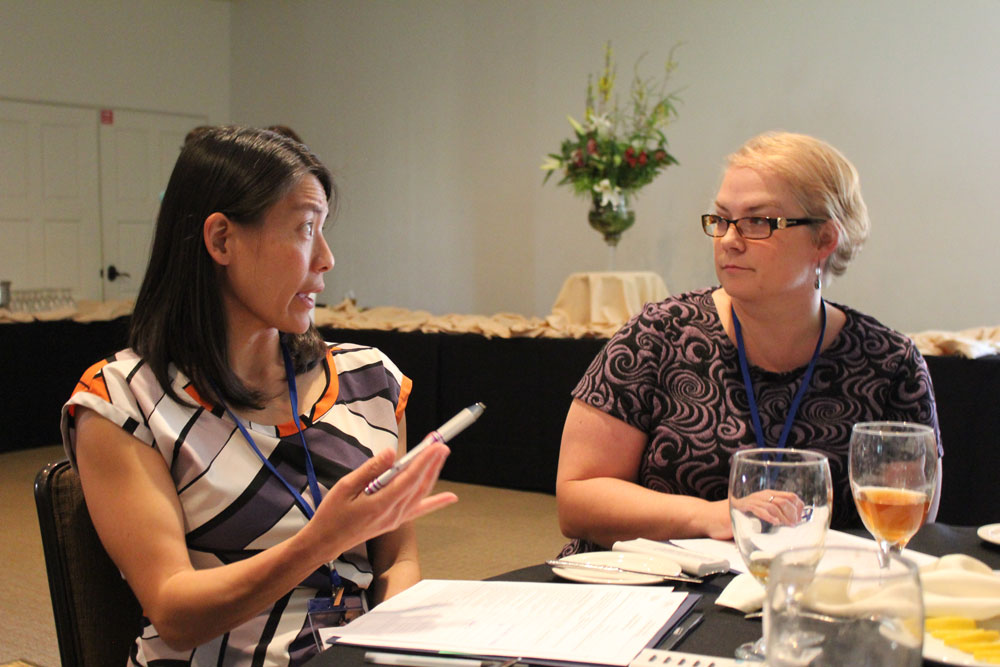
Pima Medical Institute Physical Therapist Assistant Program Director Lynette Reina and Dental Hygiene Program Director, Kimberly Peacher, discuss educational best practices during Pima Medical’s first Academic Summit, held in Tucson, Ariz., in April.
Also on the last day of the summit, program directors participated in roundtable question-and-answer sessions, with members from various departments rotating between the groups. Departments represented included: payroll, recruiting, accounting, career services and alumni/community alliances. The roundtables enabled program directors to have a more in-depth, holistic view of how Pima Medical Institute runs at the corporate level.
“What I learned from the summit was priceless,” said Las Vegas Radiography Program Director Tamra Kankoski. “It was an eye-opening experience, which was needed so we could all see what other campuses and programs are doing.”
Occupational Therapy Assistant Program Director Barbara Palmer from the Houston campus echoed Kankoski’s sentiments.
“I learned a plethora of ways that the corporate departments and staff are available to help our programs (and ultimately, our students) succeed; how to best use our IT resources; how to better engage my students and orient my faculty; and how to more effectively share and access instructor and classroom resources.”
An anonymous event evaluation form, filled out by program directors, captured the sentiments of yet another participant, who wrote, “This event is an excellent example of how important employees are to Pima Medical. I feel that I gained an extraordinary amount of helpful information that will benefit my faculty, students and myself immensely. ”
Billick was pleased with how the Academic Summit went. “Given the positive feedback and intense focus observed throughout the three days, we feel the event was a success. We are already looking forward to our next summit in 2016.”
In their own words
Pima Medical Institute’s Academic Summit was not only an informative event, but a fun one that brought program directors together who normally might not otherwise get to meet. It was a collaborative and successful three days. So what did the program directors think of it? Here are some of their thoughts, in their own words:
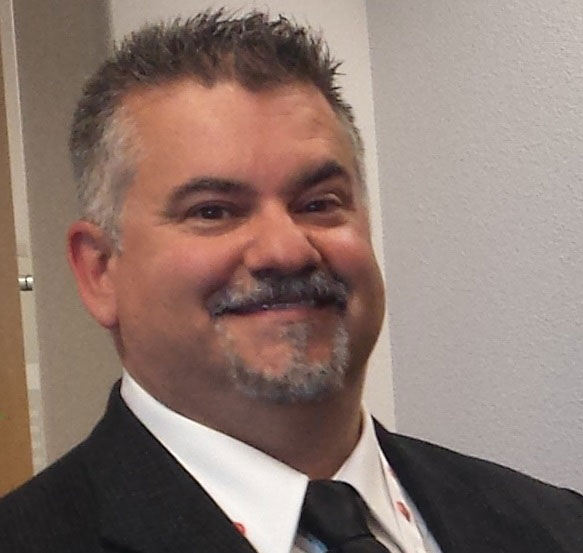
“I enjoyed learning the different techniques that are employed in the classroom by other directors and instructors. I plan to incorporate some of the innovative ideas into our RT classes in Las Vegas.”
– Anthony Everidge, Respiratory Therapy, Las Vegas
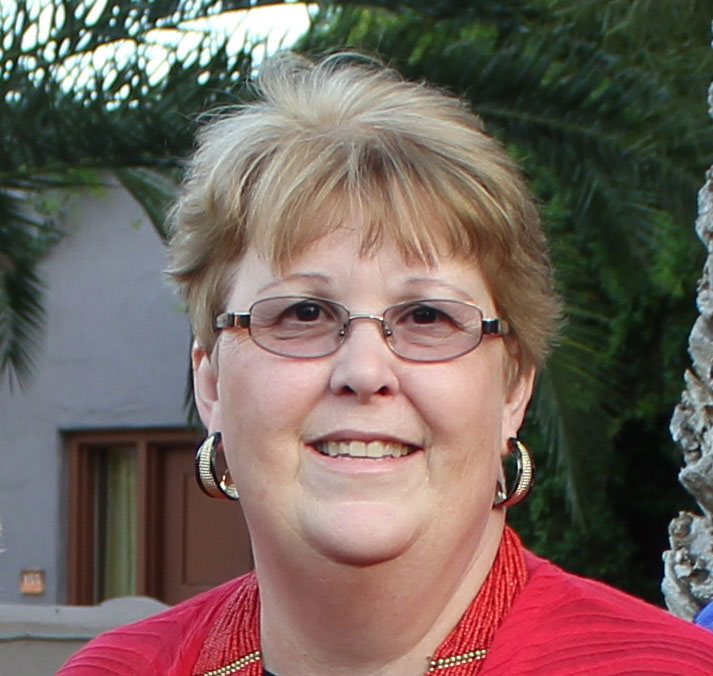
“I feel more empowered to follow policies that I’m familiar with and that will back me up when student issues arise.”
– Jo Beth Linzy, BS Radiologic Sciences, Online
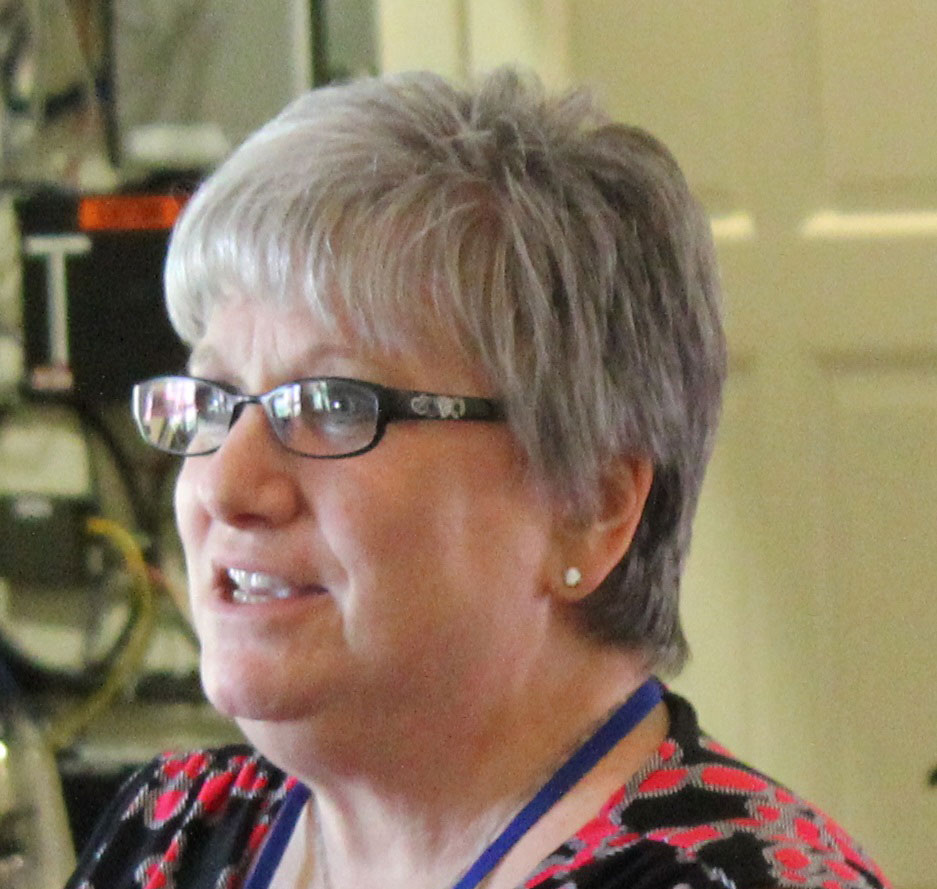
“Meeting with and engaging in informal conversations with the corporate staff made me feel more connected with Pima Medical, as did getting to know other program directors. For me, it was a great morale builder.”
– Amy Solomon, Occupational Therapy Assistant, Denver
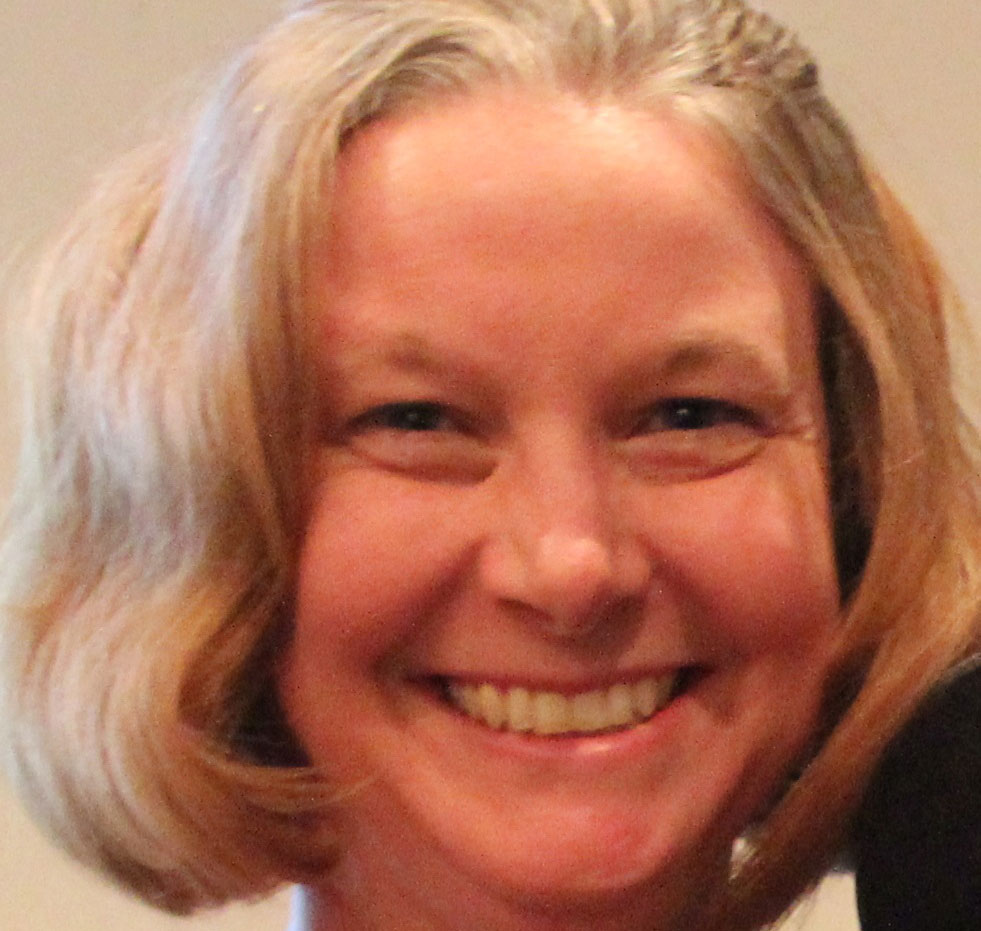
“I learned the program directors from all disciplines have similar struggles and that Pima is raising the bar on standards.”
– Monica Harvey, Veterinary Technician, Colorado Springs
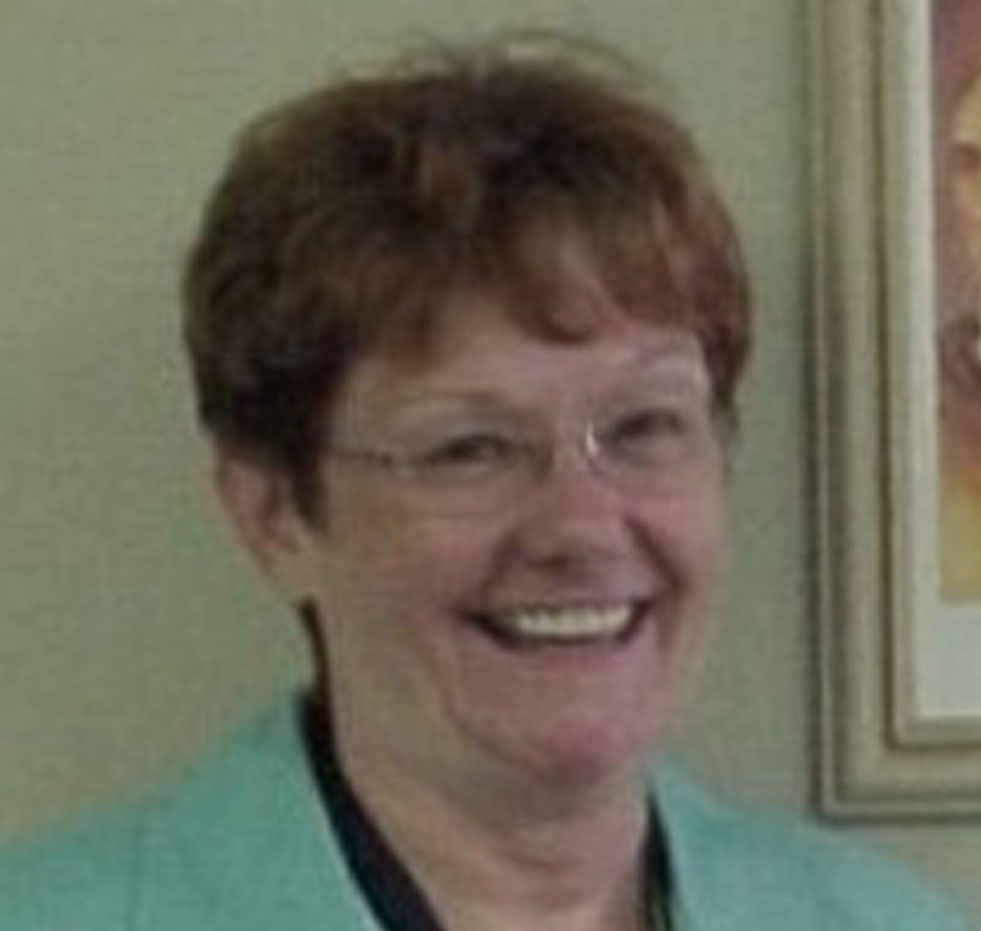
“I appreciated being in groups with other campuses and directors. I especially liked the sharing of best practices from other campuses, and liked the way it was done. Loved the academic awards ceremony.”
– Sharon Caves, Nursing, Mesa

“The summit enabled interaction of program directors, exchanging of ideas between them, and provided opportunities for update. The round-table discussion was awesome.”
– Albertus “Albert” Ohanuka, respiratory therapy, Albuquerque
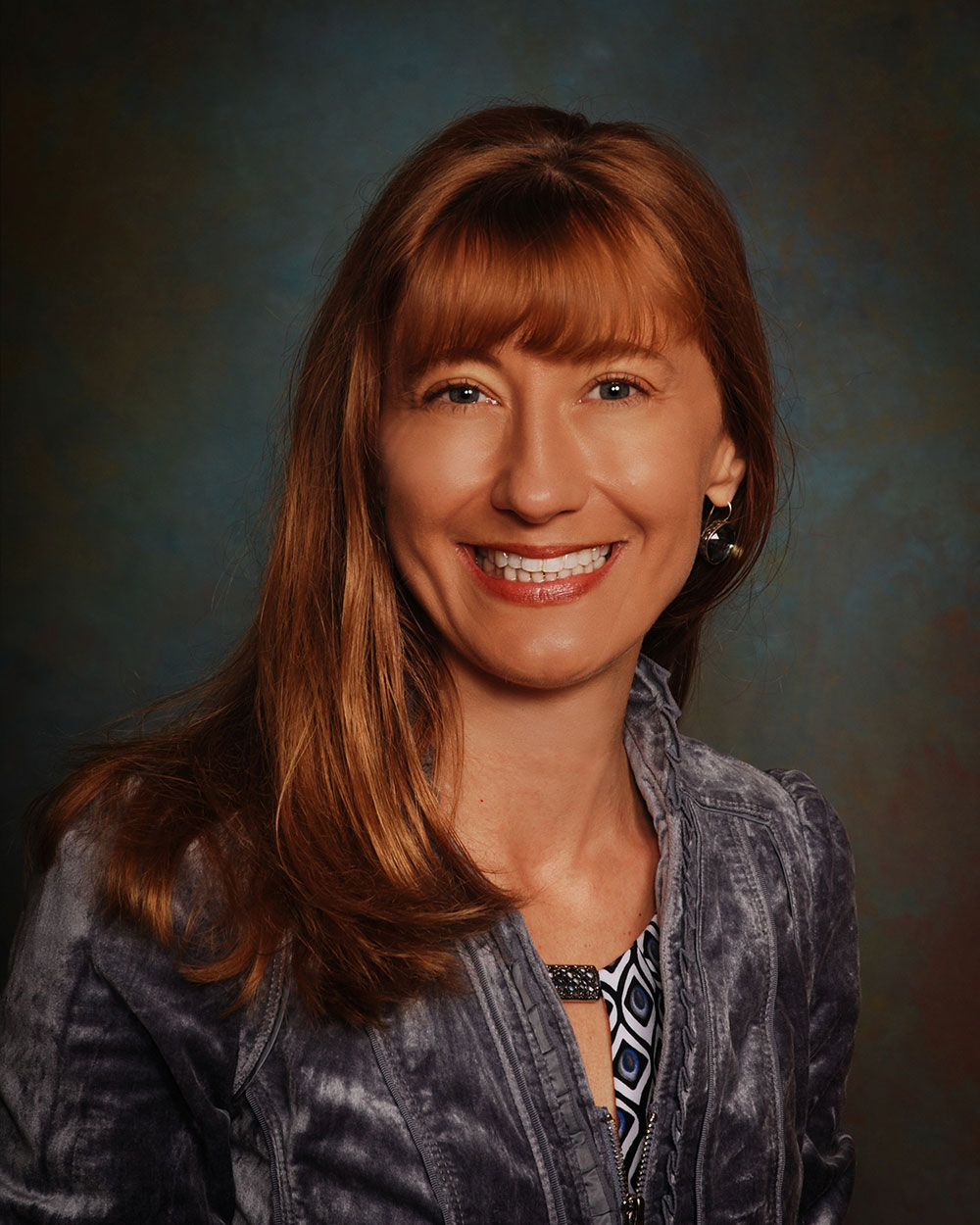
DIONNE BILLICK is the Director of Education at Pima Medical Institute, a medical career college with 16 campuses located across the Western United States. She oversees the curriculum for Pima Medical Institute’s 28 certificate, associate, and bachelor degree offerings; develops new programs to meet community needs; and directs accreditation and compliance activities. Prior to her current position, Billick has held academic leadership, teaching and patient care positions. She received her doctor of physical therapy degree from the University of Southern California.
Contact Information: Dionne Billick // Director of Education, Pima Medical Institute // 520-323-5987 // dbillick@pmi.edu
